This is a list of the greatest female warriors through history. In order to be selected for this list, the woman has had to be someone who fought in battle herself, not just commanding from a distance, and she had to be real – for this reason people like Hua Mulan are not included as there is a lot of doubt about their historical existence.
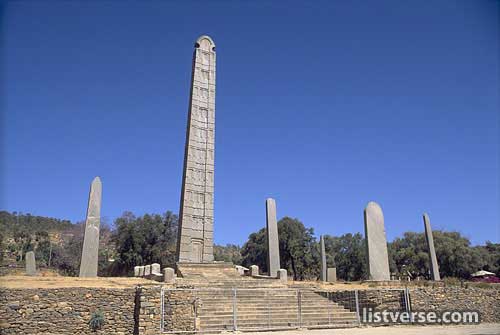
Gudit (also known as Judit) was a non-Christian queen who ruled Dʿmt around 960 AD. She laid waste to Axum (the then-Sacred capital of Ethiopia – image above) and its countryside. She destroyed monuments and churches and attempted to wipe out all of the members of the ruling dynasty (descendants of the Queen of Sheba). Her activities are recorded in oral tradition and in various historical records. It is believed that she killed the emperor and took over his throne where she reigned for 40 years. Tales of her violence and history are still told by peasants in the North Ethiopian communities. It is traditionally believed that she sacked and destroyed Debre Damo, the treasury and prison for male relatives of the King of Ethiopia.
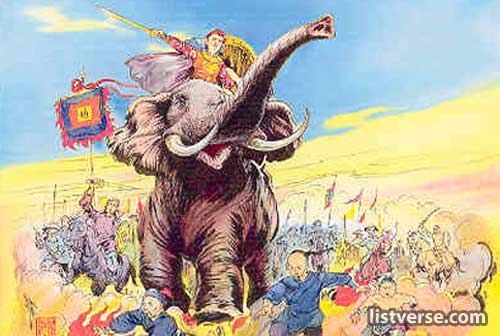
Triệu Thị Trinh was a Vietnamese warrior from the 3rd century who successfully resisted the occupying forces of the Wu Kingdom during their time in Vietnam. She was born in the Trieu Son district of Thanh Hoa province (now in Northern Vietnam). At the time of her birth, the area was controlled by the Eastern Wu Kingdom, one of China’s three Kingdoms. She was orphaned at a young age and was raised by her brother and his wife as a slave until the age of 20. She escaped from her brother’s home and fled to the jungle where she built up an army of at least 1,000 men and women soldiers. Triệu Trinh managed to liberate an area of Vietnam which she then claimed as her own. Bythe age of 23 she had defeated at least 30 Wu advances. It was said that she rode in to battle on the back of an elephant whilst wearing golden armor and carrying two swords.
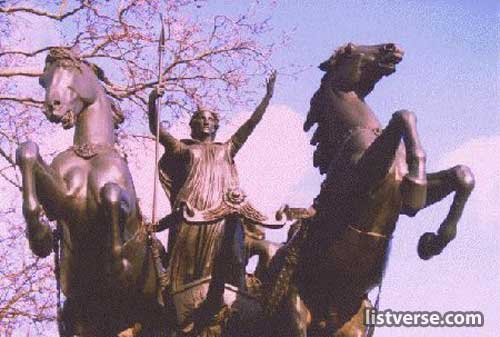
Boudicca was a Queen of the people of Norfolk who lead an uprising against the occupying forces of the Roman Empire. Her husband had left his kingdom jointly to his daughters and the Roman Emperor when he died, but the Romans did not acknowledge the joint rule – they simply took full control. It was reported that Boudica was flogged and her daughters raped. She was eventually chosen as the leader of her people and their neighbors to lead an assault on the Romans. Her army had great success in their battles – and in fact completely demolished the city of Camulodunum (Colchester). Tacitus said that the Britons had no desire to take prisoners – they simply slaughtered everyone in their path. Dio said that the noble Roman women were beheaded and had their breasts cut off and sewn to their mouths. Ironically, the great anti-imperialist rebel is now identified with the head of the British Empire, and her statue stands guard over the city she razed to the ground.
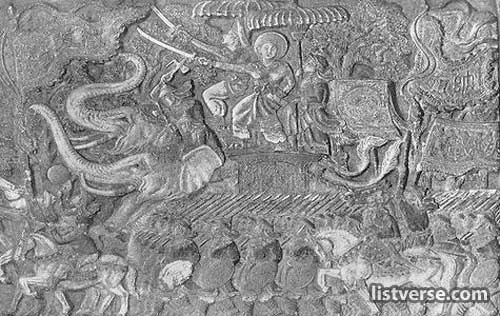
The Trưng Sisters were Vietnamese military leaders who managed to repel Chinese invasions for over three years. They are regarded as national heroines of Vietnam. They were born during the thousand-year Chinese occupation. After fighting off a small Chinese unit from their village, they assembled an army mostly consisting of women. Within months they had taken back many regionsfrom the Chinese and had liberated Nam Việt. They became Queens of the country and resisted all further attacks from the Chinese for two years. Eventually the Chinese formed a large army to crush the sisters and their army. Legend has it that the Chinese army went in to battle totally naked in order to shame the women soldiers in to defeat. Despite a heroic effort on the part of the sisters, the Chinese overcame their army. To protect their honor and to avoid ridicule at the hands of the Chinese, the two queens committed suicide by drowning themselves in the Hát river.
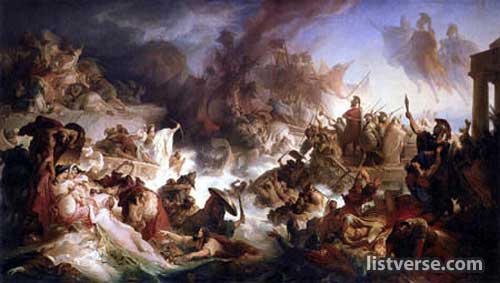
Artemisia I of Caria became the ruler of Ionia as a client of the Persians. She is best remembered for her participation in the Battle of Salamis (image above). She alone counseled the King of Persia (Xerxes) not to meet the Greeks at sea and do battle. Nevertheless he did not heed her advice and she participated in the battle in September 480 BC as the commander of five ships. At one point in the battle the Greeks were close to capturing her trireme when she devised a cunning plan to escape. She had her own ship bear down on another Persian ship causing the Greeks to think that she was fighting on their side. When she sank the ship the Greeks left her alone. Xerxes watching from a nearby hill also assumed that she had defeated an enemy ship and praised her for her bravery. Xerxes was so full of praise for her that he said: “My men have turned into women and my women into men!”. Artemisia tried to convince Xerxes to retreat to Asia Minoragainst the advice of his other generals. Ultimately the Persians suffered a great defeat.

Fu Hao was a consort of King Wu Ding of the Shang dynasty. She also (unusually for that time) served as a high priestess and military general. Her tomb (image above) was discovered in Yinxu (the ruins of the Shang Capital, Yin) full intact with her treasures. She is known to modern scholars mainly from inscriptions on Shang dynasty oracle bone artifacts. In the inscriptions she is shown to have lead many military campaigns. The Tu fought again the Shang for many generations until Fu Hao finally defeated them in a single battle. Further campaignsagainst the neighbouring Yi, Qiang, and Ba were to follow – with the latter being particularly well known as the earliest recorded large scale ambush in Chinese history. With over 13,000 troops, she was the most powerful military leader of her time.
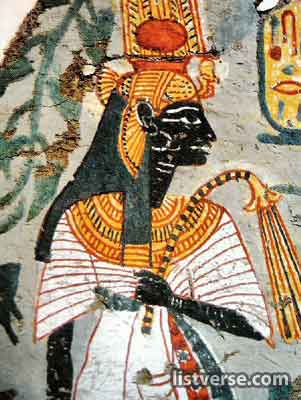
Ahhotep I was such an important figure in the early New Kingdom that she is considered to have been a pivotal figure in the founding of the eighteenth dynasty. She had a long and influential life and ruled as regent after the death of her father. She enabled her two sons (Kamose and Ahmose I) to unite Egypt after the Hyskos occupation. She was instrumental in driving the Hyskos invaders out of Egypt. She lived untilthe age of ninety and was buried beside Kamose at Thebes.
She is the one who has accomplished the rites and taken care of Egypt… She has looked after her soldiers, she has guarded her, she has brought back her fugitives and collected together her deserters, she has pacified Upper Egypt and expelled her rebels.
Weapons and jewelry found in the tomb of Ahhotep I include an axe depicting Ahmose I striking down a Hyskos soldier, and flies in honor forthe queen in her role against the Hyskos. She was considered a warrior Queen and was presented with the Order of Valor. She was honored with a stela, commissioned by Ahmose I in the temple of Amun-Re that praises her military accomplishments.

Saint Joan of Arc appeared before the Crown Prince of France after receiving visions she claimed were from God telling her to fight to take France backfrom the English late in the Hundred Years’ War. The uncrowned King Charles VII sent her to the siege at Orléans. She gained great recognition after she was able to lift the siege in only nine days. After several more swift victories, she led Charles VII to his coronation at Rheims. She is the only person ever recorded to have commanded the entire army of a nation atthe age of seventeen. Despite sustaining wounds to the neck and head, she continued to lead the country to victory repeatedly. She was tried for heresy in a false court and burnt at the stake. Her trial was declared invalid by the Pope and she was canonized as a saint many years later.
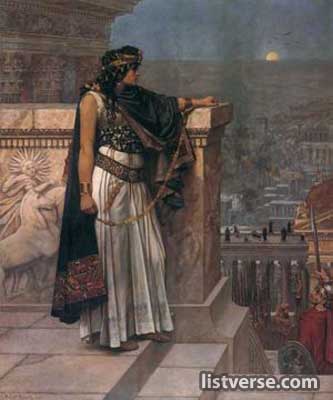
Septima Zenobia governed Syria from about 250 to 275 AD. She led her armies on horseback wearing full armor and during Claudius’ reign defeated the Roman legions so decisively that they retreated from much of Asia Minor. Arabia, Armenia and Persia allied themselves with her and she declared herself Queen of Egypt by right of ancestry. Claudius’ successor Aurelian sent his most experienced legions to conquer Zenobia but it took almost 4 years of battles and sieges before her capital city of Palmyra fell and Zenobia along with nine other martial queens of allied provinces were paraded through the streets of Rome in chains. Aurelian exiled Zenobia to Tibur. Her daughters married into influential Roman families and her line continued to be important in Roman politics for almost three centuries. Mavia, was Queen of the Bedouin Saracens from 370 to 380 AD. She led her troops in defeating a Roman army then made a favorable peace and married her daughter to the Roman commander in chief of the eastern Emperor Valens.
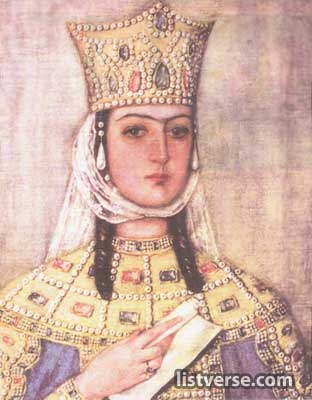
Tamar (sometimes known as Tamara) was the daughter of the Georgian King Giorgi III. Her father declared her co-ruler and heir apparent to prevent dispute after his death. After the death of her father, Tamar gained a reputation as an outstanding ruler and was dubbed “King of Kings and Queen of Queens” by her people. Her reign saw the bringing to heel of almost every neighboring Muslim state. Tamar played an active military role as the commander of her army. During her reign the kingdom reached the apex of its political, economic and cultural might. In 1201-1203, Georgians took and annexed the Armenian capitals of Ani and Dvin. In 1204, Tamar’s army occupied the city of Kars. In 1204, Tamar helped to found the Empire of Trebizond on the southern shore of the Black Sea (whose capital is now the Turkish city of Trabzon). Queen Tamar died in 1213.
Source: http://listverse.com/2008/03/17/top-10-badass-female-warriors/
Tidak ada komentar:
Posting Komentar